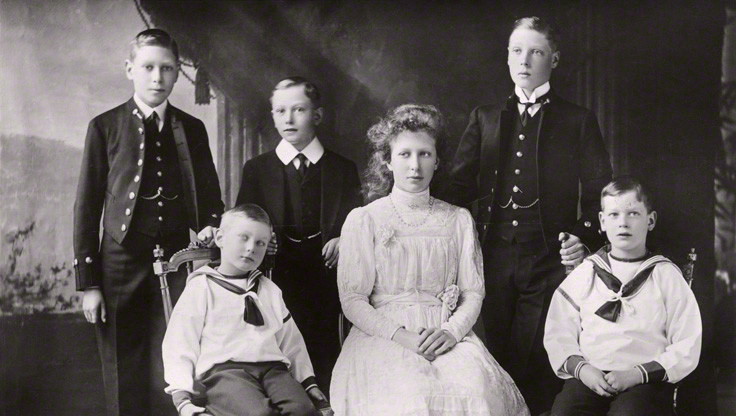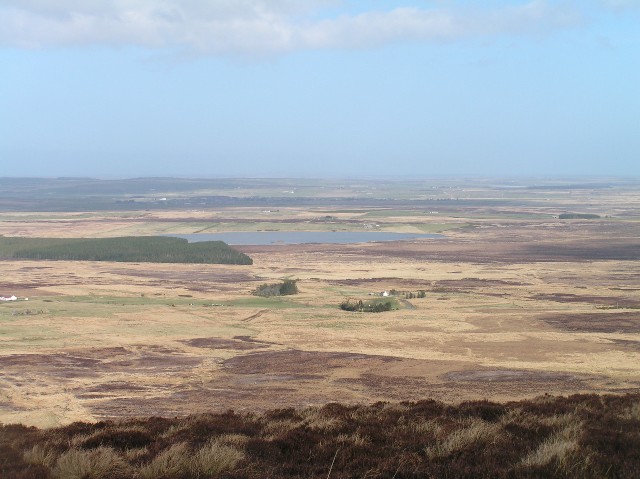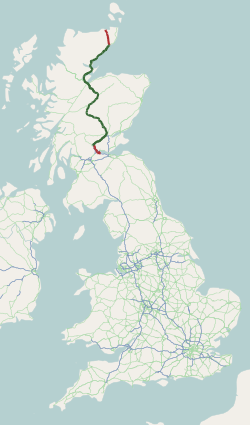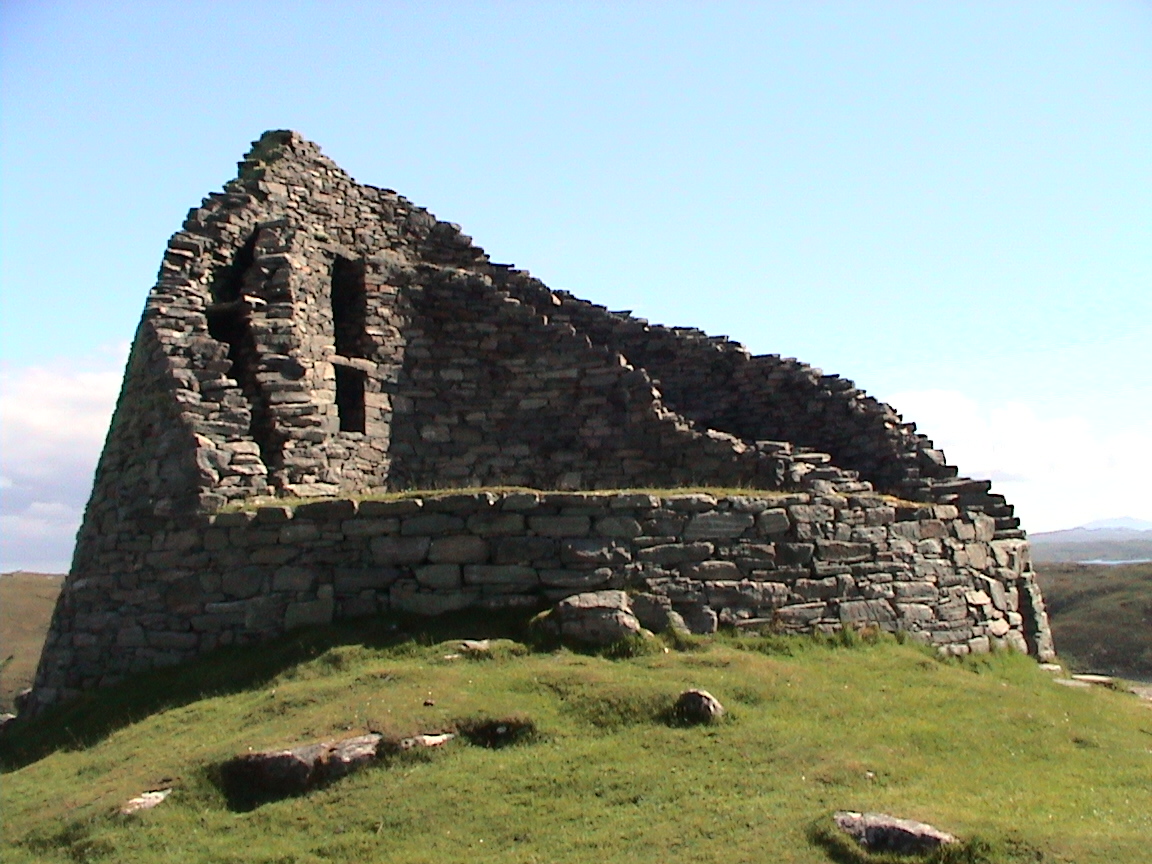|
Dunbeath
Dunbeath ( gd, Dùn Bheithe) is a village in south-east Caithness, Scotland on the A9 road. It sits astride the Dunbeath Water just before it enters the sea at Dunbeath Bay. Dunbeath has a very rich archaeological landscape, the site of numerous Iron Age brochs and an early medieval monastic site (see Alex Morrison's archaeological survey, "Dunbeath: A Cultural Landscape".) There is a community museum/landscape interpretation centre at the old village school (http://www.dunbeath-heritage.org.uk). Prince George, Duke of Kent, was killed when his Short Sunderland flying boat crashed on a Dunbeath hillside on 25 August 1942. Notable people It was the birthplace of Neil M. Gunn (1891–1973), author of ''Highland River'' and others, many of whose novels are set in Dunbeath and its Strath. Of Dunbeath's landscape, Gunn wrote: "These small straths, like the Strath of Dunbeath, have this intimate beauty. In boyhood we get to know every square yard of it. We encompass it physically ... [...More Info...] [...Related Items...] OR: [Wikipedia] [Google] [Baidu] |
Dunbeath Water
Dunbeath Water is a short river in Caithness in northern Scotland. It rises at Loch Braigh na h-Aibhne in the Flow Country and initially flows northeast before turning generally south-southeastward to flow through Dunbeath and into the Moray Firth at Dunbeath Bay. Its main tributaries in its upper catchment are the left-bank ones of Allt a' Bhuic which drains Loch Dubh and the Raffin Burn which drains Loch Breac. On the western edge of Dunbeath, the Burn of Houstry, fortified by the Allt an Learanaich also enter on the north bank. The river is crossed by the old bridge and a new bridge carrying the modern A9 road northwards. A small harbour has been developed at the river mouth. References Rivers of Highland (council area), Dunbeath Water Moray Firth catchment area, Moray Firth catchment area {{Scotland-river-stub ... [...More Info...] [...Related Items...] OR: [Wikipedia] [Google] [Baidu] |
Prince George, Duke Of Kent
Prince George, Duke of Kent, (George Edward Alexander Edmund; 20 December 1902 – 25 August 1942) was a member of the British royal family, the fourth son of King George V and Queen Mary. He was a younger brother of kings Edward VIII and George VI. Prince George served in the Royal Navy in the 1920s and then briefly as a civil servant. He became Duke of Kent in 1934. In the late 1930s he served as an RAF officer, initially as a staff officer at RAF Training Command and then, from July 1941, as a staff officer in the Welfare Section of the RAF Inspector General's Staff. He was killed in a military air-crash on 25 August 1942. Early life Prince George was born on 20 December 1902 at York Cottage on the Sandringham Estate in Norfolk, England. His father was the Prince of Wales (later King George V), the only surviving son of King Edward VII and Queen Alexandra. His mother was the Princess of Wales, later Queen Mary, the only daughter and eldest child of the Duke and Du ... [...More Info...] [...Related Items...] OR: [Wikipedia] [Google] [Baidu] |
Highland River
''Highland River'' is a novel by Neil M. Gunn. Its plot revolves around a young boy called Kenn who grows up next to the Dunbeath river, then going on to experience the horrors of the First World War and his attempts to rediscover inner peace and satisfaction on his return to his village. Plot The plot is episodic and moves between Kenn's childhood and adult life. It begins with a young Kenn poaching his first salmon from the Dunbeath river. He encounters a sadistic beating from a schoolmaster, adventures in the trenches which result in his brother Angus suffering from shellshock and he meets Radzyn, an intellectual, scientific European who does not share Kenn's belief in the mystery of existence. Kenn's ultimate goal is to 'get back to the source of...life... the source of the river and the source of himself'. Gunn's description of his 'Highland River' (aka Dunbeath River) is wholly accurate, avoiding literary licence in capturing the very essence of its pools and surround ... [...More Info...] [...Related Items...] OR: [Wikipedia] [Google] [Baidu] |
Caithness
Caithness ( gd, Gallaibh ; sco, Caitnes; non, Katanes) is a historic county, registration county and lieutenancy area of Scotland. Caithness has a land boundary with the historic county of Sutherland to the west and is otherwise bounded by sea. The land boundary follows a watershed and is crossed by two roads (the A9 and the A836) and by one railway (the Far North Line). Across the Pentland Firth, ferries link Caithness with Orkney, and Caithness also has an airport at Wick. The Pentland Firth island of Stroma is within Caithness. The name was also used for the earldom of Caithness ( 1334 onwards) and for the Caithness constituency of the Parliament of the United Kingdom (1708 to 1918). Boundaries are not identical in all contexts, but the Caithness area lies entirely within the Highland council area. Toponymy The ''Caith'' element of the name ''Caithness'' comes from the name of a Pictish tribe known as the ''Cat'' or ''Catt'' people, or ''Catti'' (see Kingd ... [...More Info...] [...Related Items...] OR: [Wikipedia] [Google] [Baidu] |
A9 Road (Great Britain)
The A9 is a major road in Scotland running from the Falkirk council area in central Scotland to Scrabster Harbour, Thurso in the far north, via Stirling, Bridge of Allan, Perth and Inverness. At 273 miles (439 km), it is the longest road in Scotland and the fifth-longest A-road in the United Kingdom. Historically it was the main road between Edinburgh and John o' Groats, and has been called ''the spine of Scotland''. It is one of the three major north–south trunk routes linking the Central Belt to the Highlands - the others being the A82 and the A90. The road's origins lie in the military roads building programme of the 18th century, further supplemented by the building of several bridges in later years. The A9 route was formally designated in 1923, and originally ran from Edinburgh to Inverness. The route was soon extended north from Inverness up to John O'Groats. By the 1970s the route was hampered by severe traffic congestion, and an extensive upgrading program ... [...More Info...] [...Related Items...] OR: [Wikipedia] [Google] [Baidu] |
Latheron
Latheron () is a small village and civil parish in Caithness, in the Highland area of Scotland Scotland (, ) is a country that is part of the United Kingdom. Covering the northern third of the island of Great Britain, mainland Scotland has a border with England to the southeast and is otherwise surrounded by the Atlantic Ocean to ..., centred on the junction of the A9 with the A99. The Clan Gunn Heritage Centre and Museum is housed in the old Parish Church (built in 1734). The church was donated to the Society in 1974 and with financial support from the Highlands and Islands Development Board, Caithness District Council and the Scottish Countryside Commission the clan society converted it into a museum; it was officially opened on 22 August 1985. References External links Latheron historical notes Populated places in Caithness Parishes in Caithness {{Highland-geo-stub ... [...More Info...] [...Related Items...] OR: [Wikipedia] [Google] [Baidu] |
Gifu University
is a national university in the city of Gifu, Gifu, Gifu, Gifu Prefecture, Japan. It is sometimes abbreviated as Gidai (岐大) or Gifudai (岐阜大). National University Corporation The Tokai National Higher Education and Research System established by integrating with Nagoya University in April 2020, both are major universities in Tōkai region. Faculties and graduate schools The following undergraduate and graduate degree programs and courses are offered on the #Directions to Gifu University, Yanagido campus. Faculties *Faculty of Education *Faculty of Regional Studies *School of Medicine *Faculty of Engineering *Faculty of Applied Biological Sciences *Faculty of Agriculture Graduate schools *Graduate School of Education *Graduate School of Regional Studies *Graduate School of Medicine *Graduate School of Engineering *Graduate School of Agriculture *United Graduate School of Agricultural Science *:Shizuoka University and Shinshu University joined with Gifu University in e ... [...More Info...] [...Related Items...] OR: [Wikipedia] [Google] [Baidu] |
Edinburgh University
The University of Edinburgh ( sco, University o Edinburgh, gd, Oilthigh Dhùn Èideann; abbreviated as ''Edin.'' in Post-nominal letters, post-nominals) is a Public university, public research university based in Edinburgh, Scotland. Granted a royal charter by King James VI and I, James VI in 1582 and officially opened in 1583, it is one of Scotland's Ancient universities of Scotland, four ancient universities and the List of oldest universities in continuous operation, sixth-oldest university in continuous operation in the English-speaking world. The university played an important role in Edinburgh becoming a chief intellectual centre during the Scottish Enlightenment and contributed to the city being nicknamed the "Etymology of Edinburgh#Athens of the North, Athens of the North." Edinburgh is ranked among the top universities in the United Kingdom and the world. Edinburgh is a member of several associations of research-intensive universities, including the Coimbra Group, Le ... [...More Info...] [...Related Items...] OR: [Wikipedia] [Google] [Baidu] |
St Andrews University
(Aien aristeuein) , motto_lang = grc , mottoeng = Ever to ExcelorEver to be the Best , established = , type = Public research university Ancient university , endowment = £117.7 million (2021) , budget = £286.6 million (2020–21) , chancellor = The Lord Campbell of Pittenweem , rector = Leyla Hussein , principal = Sally Mapstone , academic_staff = 1,230 (2020) , administrative_staff = 1,576 , students = () , undergrad = () , postgrad = () , doctoral = , other = , city = St Andrews , state = , country = Scotland , coordinates = , campus = College town , colours = United College, St Andrews St Mary's College School of Medicine ... [...More Info...] [...Related Items...] OR: [Wikipedia] [Google] [Baidu] |
Glasgow University
, image = UofG Coat of Arms.png , image_size = 150px , caption = Coat of arms Flag , latin_name = Universitas Glasguensis , motto = la, Via, Veritas, Vita , mottoeng = The Way, The Truth, The Life , established = , type = Public research universityAncient university , endowment = £225.2 million , budget = £809.4 million , rector = Rita Rae, Lady Rae , chancellor = Dame Katherine Grainger , principal = Sir Anton Muscatelli , academic_staff = 4,680 (2020) , administrative_staff = 4,003 , students = () , undergrad = () , postgrad = () , city = Glasgow , country = Scotland, UK , colours = , website = , logo ... [...More Info...] [...Related Items...] OR: [Wikipedia] [Google] [Baidu] |
Brochs
A broch is an Iron Age drystone hollow-walled structure found in Scotland. Brochs belong to the classification "complex Atlantic roundhouse" devised by Scottish archaeologists in the 1980s. Their origin is a matter of some controversy. Origin and definition The word ''broch'' is derived from Lowland Scots 'brough', meaning (among other things) fort. In the mid-19th century Scottish antiquaries called brochs 'burgs', after Old Norse ', with the same meaning. Place names in Scandinavian Scotland such as Burgawater and Burgan show that Old Norse ' is the older word used for these structures in the north. Brochs are often referred to as '' duns'' in the west. Antiquarians began to use the spelling ''broch'' in the 1870s. A precise definition for the word has proved elusive. Brochs are the most spectacular of a complex class of roundhouse buildings found throughout Atlantic Scotland. The Shetland Amenity Trust lists about 120 sites in Shetland as candidate brochs, while the Royal ... [...More Info...] [...Related Items...] OR: [Wikipedia] [Google] [Baidu] |
Neil M
Neil is a masculine name of Gaelic and Irish origin. The name is an anglicisation of the Irish ''Niall'' which is of disputed derivation. The Irish name may be derived from words meaning "cloud", "passionate", "victory", "honour" or "champion".. As a surname, Neil is traced back to Niall of the Nine Hostages who was an Irish king and eponymous ancestor of the Uí Néill and MacNeil kindred. Most authorities cite the meaning of Neil in the context of a surname as meaning "champion". Origins The Gaelic name was adopted by the Vikings and taken to Iceland as ''Njáll'' (see Nigel). From Iceland it went via Norway, Denmark, and Normandy to England. The name also entered Northern England and Yorkshire directly from Ireland, and from Norwegian settlers. ''Neal'' or ''Neall'' is the Middle English form of ''Nigel''. As a first name, during the Middle Ages, the Gaelic name of Irish origins was popular in Ireland and later Scotland. During the 20th century ''Neil'' began to be used in En ... [...More Info...] [...Related Items...] OR: [Wikipedia] [Google] [Baidu] |





